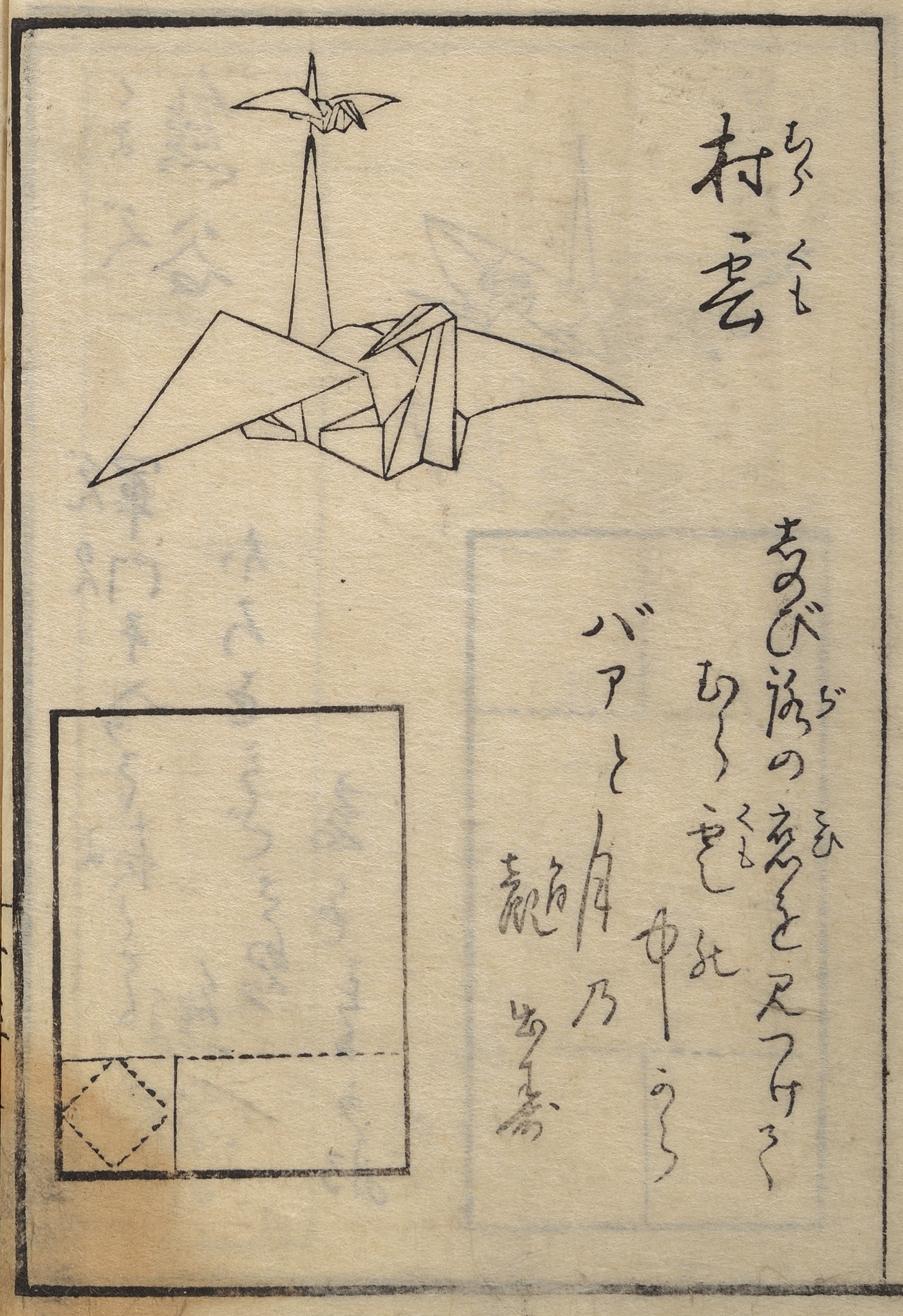The History of Origami in Japan
The technique of paper making, which was introduced into Japan from China during the early seventh century, underwent considerable changes in its manufacturing process in Japan giving rise to a type of paper possessing dual qualities of resilient sturdiness and softness which prevents tearing when it is handled, Washi, a unique and distinct type of Japanese paper kindled many forms of cultural creativity, among them origami.
Unfortunately, it is not clear when origami in Japan first originated, However, what is known is that from old, letters and paper to wrap items in were folded. A well-regulated lifestyle came with the advent of samurai society which gave rise to the art of paper folding for practical and formal purposes. Recently, however, particularly from the onset of the Showa period (1926-1989), the art has rapidly passed into oblivion, but a vestige of its former use can still be seen in the noshi, a decoration of folded red and white paper attached to a gift.
Origami made to assume concrete shapes of, for example, a crane or boat is regarded as origami for pure enjoyment. However, I feel that these were probably once made for the purpose of bearing the illnesses and misfortunes that befell a person. They began to be made sometime around the beginning of the Edo period (1600-1868) which coincided with an age in which mass-produced, low-priced paper came to be widely used among the people.
During the Genroku era (1688-1704), origami of the crane and several varieties of boats used as designs on clothing became fashionable, and they were also reproduced with great frequency in Ukiyoe prints. Origami rapidly came to have a wide following during this period.
About a hundred years later, books and printed matter devoted exclusively to origami were published, creating a diverse and advanced form of origami. They were not only a form of children's amusement, but because they were also intended for adults, many of these origami were difficult to make and incorporated many complicated steps.
The technique of paper making was introduced into Europe in the twelfth century producing a distinct form of origami. However, origami was not taken up by a large number of people as it was in Japan.
During the Meiji period (1868-1912), origami was used as a teaching tool in the kindergarten and elementary school levels. Japan's origami was greatly influenced by Friedrich Wilhelm August Fröbel (1782-1852), a mid-nineteenth century German educator's method of teaching derived from European traditional origami, which further developed into folding to make various geometrical shapes, and was widely adopted particularly in the Japanese kindergartens.
During the Meiji period alone, there were many new origami creations conceived by numerous unknown inventors. However because origami required following precise directions, origami was not well received during the Taishou period (1912-1926), a time when educators favored placing importance on originality and creativity. Origami was deemed as lacking in these qualities. However, braced by a long history, origami once again regained its popularity.
Not only are there now many imaginative and novel origami creations, but its educational worth and immense potential have been also reconsidered and recognized. Origami has gained a widespread following as a hobby among adults. There are now many origami associations that have been formed overseas by origami enthusiasts.

No hay comentarios:
Publicar un comentario